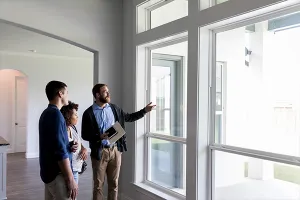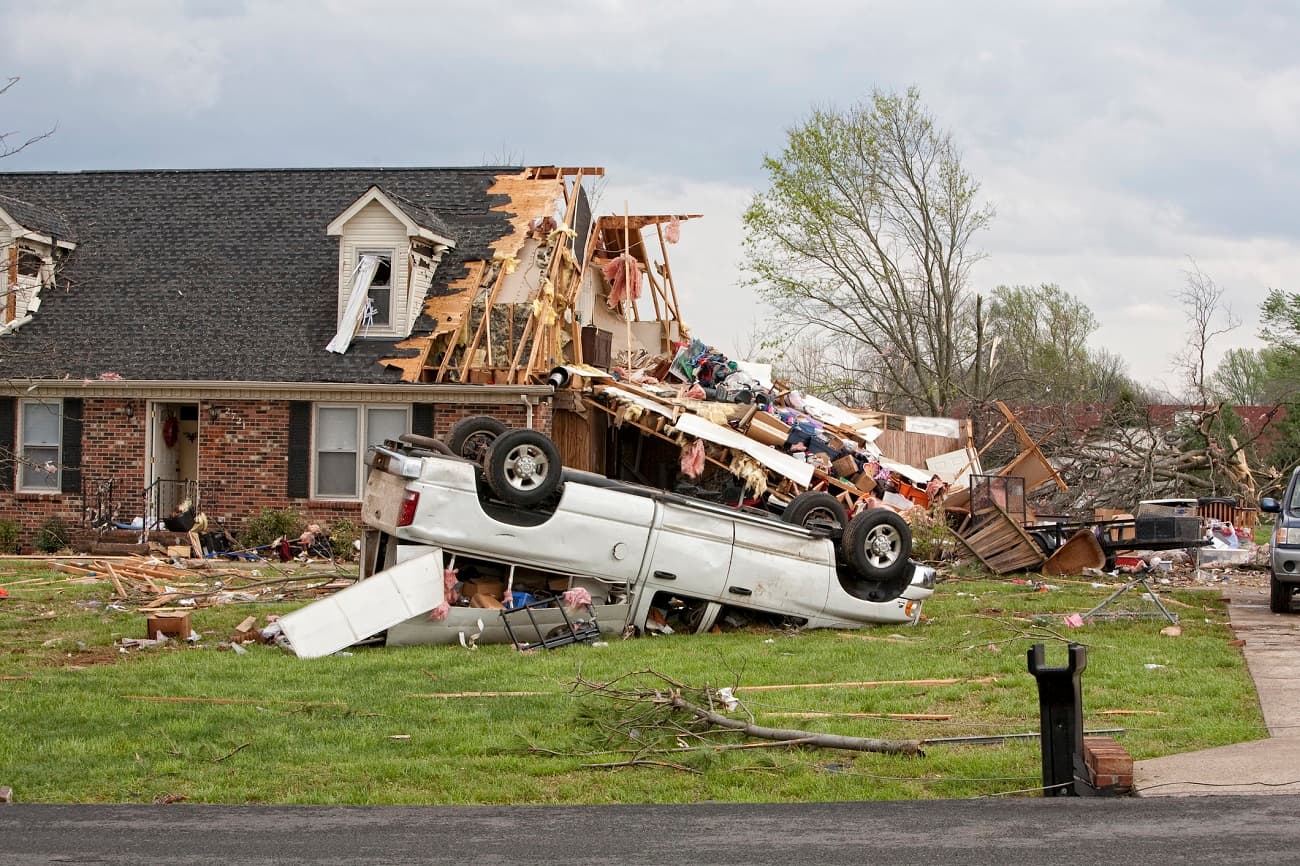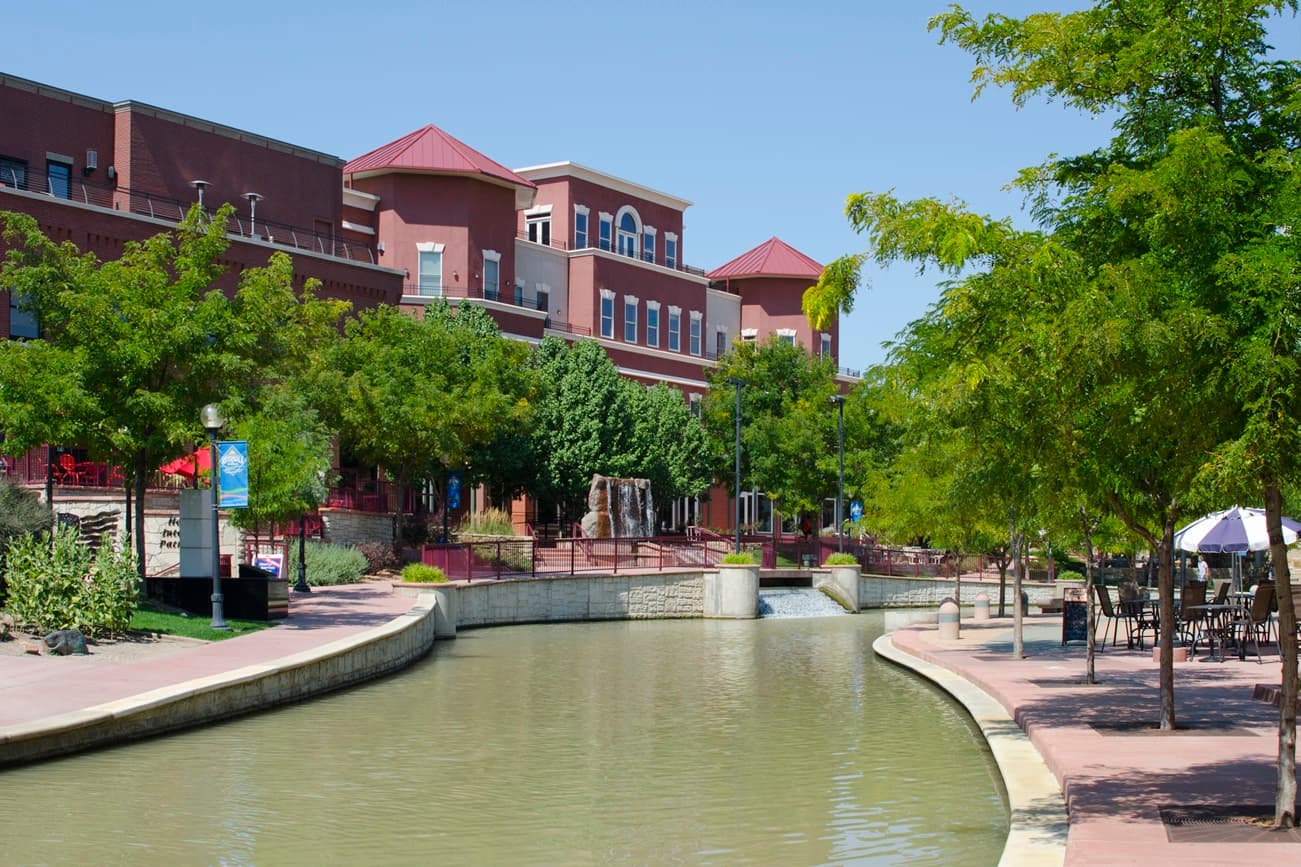Whether you’re building or investing in a healthcare facility, an office building, a warehouse, a school, a data center, a cultural building or a mixed-use development, safety and durability are at the top of the list of necessary attributes. In the face of increasing threats from hurricanes, tornadoes, earthquakes, wildfires, floods and extreme temperatures, building scientists and architects employ design practices and new technology that demonstrate how human ingenuity can keep these significant real estate investments profitable and businesses operational.

“Every building owner or investor needs to start with a risk assessment that includes scenarios for the top five or six risks that could impact them,” said Stet Sanborn, a San Francisco-based vice president and director of climate impact for SmithGroup, a 170-year-old architecture and planning firm.
Data analytics firms such as ATTOM Data Solutions, First Street, and Cotality (formerly CoreLogic), as well as insurance companies can provide insights by address about the probability of an impact on that location from fire, wind, water or extreme temperatures. Corporations are evaluating the costs associated with these risks as well as the benefits of retrofitting buildings to make them more resilient to climate-related effects.
“Normally, real estate represents 4 to 5 percent of a company’s profit and loss, but now costs have gone up so high they can be 10 to 15 percent of profit and loss, particularly for space that needs to be retrofitted for resilience,” said Kevin Dollhopf, a corporate real estate advisor and CEO, ExcelCrest LLC, based in Winston-Salem, N.C. “That means companies need to consider consolidation or reconsider their use of space.”
Weather-related disasters cost nearly $3 trillion between 1980 and January 2025, according to the National Oceanic and Atmospheric Administration’s (NOAA) National Centers for Environmental Information (NCEI) 2025 U.S. Billion-Dollar Weather and Climate Disasters Report, which only includes disasters that generated losses and repair costs of $1 billion or more in 2024 dollars.
Site Selection for Resilience
As companies grow and communities expand and need more public buildings such as hospitals, schools and other municipal buildings, they search for new locations to either build new facilities or retrofit existing properties.

“Climate has always been part of risk management, but over the past 15 years or so companies are more prudent about site selection because of natural hazards and the likelihood of natural disasters to hit a particular area,” Dollhopf said.
However, companies looking for industrial space and other commercial needs must consider their inputs and outputs along with their network of suppliers and accessibility, which outweighs climate risk for industries, Dollhopf added.
“Offices need to be near a labor pool with the greatest abundance of the skill sets their company needs,” said Jim Hazard, a Dallas-based managing principal of Cresa, a global commercial real estate advisory firm. “Industrial sites need to be in the most effective place to distribute their goods. A company that provides a lot of products to clients in Jacksonville isn’t going to relocate to Tennessee—they will just do what they can to mitigate hurricane risk.”
Data centers and some critical manufacturing businesses may be able to locate in an area at lower risk from climate disasters, Hazard said, but for the bulk of companies, climate risk is just one factor among many when it comes to site selection.
Designing for Resilience
Depending on the location and the risk, some buildings must be built or retrofitted to meet specific code requirements for resilience. For example, in California, all new buildings are built to higher standards to hold up to a seismic event, said Steve Bellitti, a senior executive vice president for logistics and transportation solutions based in Ontario, Calif., with Colliers, a global commercial real estate services company. Regulations are also in place to retrofit older buildings to be more resistant to earthquake damage.

Regardless of whether it’s mandatory or a smart way to protect a company’s assets, risks that can be mitigated include:
- Floods and rising sea levels. Moving electrical and mechanical systems above the basement level can reduce risk of damage to buildings from water. A more costly but effective option is to elevate the entire building.
- Hurricanes and tornadoes. Aerodynamic building designs can lower risk, along with the installation of hurricane-rated windows and doors, and structural improvements for roofs. In addition, safe rooms can be designed to protect employees during a storm.
- Wildfires. Commercial buildings are typically less prone to wildfire damage because they are less likely to be built of wood or have eaves or attic openings that can introduce fire inside. Site management to reduce debris or plants that spread fire are common practices.
- Extreme temperatures. More warehouse and office building owners are investing in air conditioning despite the cost in order to attract and retain employees. High-performance insulation, white or cool roofs to reflect the sun, green roofing to mitigate heat, geothermal heating and cooling systems, highly efficient HVAC systems, and solar panels with battery storage to mitigate extreme temperatures are also being used depending on how much a company wants to invest.
- Earthquakes. Structural reinforcement, which is mandatory in California, can include reinforced concrete and steel frames.
- Power outages. Solar power with battery storage and onsite generators are a necessity for healthcare facilities and other critical infrastructure, but many companies are investing in these features for employee safety and operational benefits.

“The building process is all about mitigating the forces of nature from seismic events to fire, water and sunlight,” said Zoltan Pali, founder and design principal of SPF:a, an architecture firm based in Los Angeles.
At WE3 at Waters Edge, an office complex at Playa Vista on the west side of Los Angeles, Pali was asked to design a building for a potentially higher water table due to rising sea levels.
“Instead of designing the parking basement above a 19-foot water table, we had to design it for the possibility of the water table being just 9 feet below grade,” Pali said. “In that case, we worked with structural engineers to design a building that would be heavy enough to resist the upward pressure of rising water. We also drilled 900 piles filled with concrete with pads underneath to create a hard surface for earthquake resilience.”

Construction Techniques that Work
While building scientists and engineers continue to work on innovations to increase the resilience of commercial buildings, the structural concrete insulated panel building system known today as RSG 3-D has been used for 30 years in 20 countries without sustaining any damage from hurricanes, typhoons, seismic events, wildfires, structural fires, floods or hail, according to Ken Calligar, CEO of RSG 3-D, headquartered in Old Westbury, N.Y.
“The key to our panelized system is the combination of the insulated panel with a steel truss system that together weigh less than concrete but has more strength,” Calligar said. “The materials are fire and flood resistant, plus the truss system creates a monolithic structure so that stress from hurricane force winds or an earthquake is spread throughout the building. Our track record is a significant indication of the level of resilience and risk mitigation this system provides.”
RSG-3-D can be used for both residential and commercial applications.
“Businesses are scrambling to address the financial risk inherent in risks to their buildings, and they’re painfully aware of the higher insurance costs that come with a higher risk assessment,” Calligar said. “Our costs are comparable to traditional building and sometimes even less expensive.”
Because RSG 3-D provides the structure for buildings, it can’t typically be used for a retrofit. However, it can be used for an addition to an existing building.
“We’ve built shopping centers, municipal buildings and warehouses, and we have a sizeable pipeline ahead of us,” Calligar said. “For maximum structural integrity it’s best to install an RSG 3-D roof on every building, but it’s heavier than a traditional roof. Commercial buildings that have a big expanse of roof are sometimes built with a light gauge steel roof with RSG 3-D walls, which isn’t quite as good as one built fully with RSG 3-D but comes close.”
Technology to mitigate risk continues to evolve, including building materials such as Arclin’s Firepoint, a new sheathing system demonstrated at the 2025 International Builders Show that slows the spread of flames and provides up to 53 percent more fire resistance than code requirements. Firepoint withstood fire for up to 90 minutes in testing.
Financial Factors of Resilience Planning
For commercial property owners and developers, cost is always an important factor, particularly to balance the need to attract and retain tenants who don’t always want to share the extra expense required to increase resilience, Dollhopf said.
When SmithGroup works with building owners, they plan for future adjustments such as extra electrical capacity in case additional coolers will be needed. Flexibility can help owners address the financial burden of building and retrofitting for resilience, allowing incremental expenditures as improvements are phased in, Sanborn said.
Other financial issues developers need to address include:
- Insurance
“The biggest concern for the institutional owners that I deal with is the change in the cost of insurance, particularly in Southern California,” Bellitti said. “Every company is required to have earthquake insurance, but over the past three to five years premiums have increased 350 percent.”
While an automatic discount on insurance premiums for resilience is not guaranteed, insurance companies price their coverage based on risk assessments. Building owners that invest in resilient buildings and retrofits may be offered better rates. More importantly, some buildings without retrofits such as hurricane-resistant windows or structural modifications to stand up to seismic events are uninsurable, Hazard said.
“Since retrofitting for resilience has been happening for just the last five years or so, there’s not really enough evidence for insurance companies to provide widespread deep discounts yet, but they are looking into it,” Sanborn said.
- HVAC upgrades
While some companies resist installing air conditioning, it can become a necessity to retain employees in response to extreme heat.
“In San Francisco, a lot of office buildings aren’t designed with air conditioning because the peak temperature used to be 89 and now it’s 99,” Sanborn said. “But if you have to send employees home, that can impact productivity and the lease-ability of the building. Plus, increased utility bills play into lease terms.”
In warehouses, it’s fairly common not to heat or air condition space unless the products being stored require it, Hazard said.
“Air conditioning can cost $12 per square foot to install, but with labor shortages, more companies are investing in it to attract and keep labor,” he said.
Utility companies in some areas are investing in demand-side energy management, which building owners can benefit from if they can reserve their largest use of power for off-peak hours when the price is lower, Bellitti said.
“One company looking for an 800,000-square-foot building wanted to add air conditioning, but the power company wouldn’t guarantee a power use upgrade,” Bellitti said. “The company moved five miles to a different location that had the power availability they needed.”
- Code compliance
Retrofitting buildings for resilience to a seismic event is just the cost of doing business in California, Bellitti said.
“Most companies have to have a presence in California: 40 percent of the products that come into the United States pass through one of the two ports in California, plus 25 million live here,” he said. “Locating outside of California isn’t an option.”
Investing in Retrofits
In commercial real estate, approximately 80 percent of buildings already exist, which means retrofits are likely to be necessary for many building owners, Dollhopf said.
“Most building owners recognize that investing in resilience is necessary to maintain the long-term value of their property,” Sanborn said. “Retrofitting can be more costly and complicated depending on its function. For example, if you have an office with multiple tenants you may have to do piecemeal retrofits. Retrofitting a hospital with 24/7 occupancy is far more complicated than a university building that’s empty in the summer.”
Still, there are some lower cost retrofits that can keep a building operational and protect employees. “For example, mitigating poor indoor air quality because of wildfire smoke can be done by sealing air leaks in a building, which can take a couple of hours,” Sanborn said. “There are also specialized air filtration systems that can be manually added.”

A more challenging problem to solve is damage from high wind events such as tornadoes and derechos, Sanborn said.
“You need to get behind the walls to see if there are tiedowns and how well the walls are attached to the roof,” he said. “That can be labor intensive and costly.”
Installing stronger windows can also be costly, but there is a payback in terms of higher levels of energy efficiency and lower utility bills.
“The most effective, least intrusive way to improve resilience in an existing building to seismic events is to upgrade the walls with sheets of carbon fiber that bond to the existing concrete and can be refinished,” Pali said.
Redundancy Requirements
In addition to the hardening of buildings to be resilient to climate impacts, companies need to address operational logistics that follow a disaster.
“Businesses need a contingency plan to address access to their site, power outages, data management and critical employees,” Dollhopf said.
Every company needs to think about what they need to keep operating and what they could do without, temporarily, Sanborn said.
“For example, a waste treatment facility near a coast needs to be prepared for what would happen in a flood with cots for their staff if people can’t use the roads,” he said. “Hospitals need 72 to 96 hours of back-up power and clean drinking water.”
Risk assessments should be done for every piece of real estate a company owns, along with a list of what retrofits can help, what they cost and any potential savings on insurance or other expenses, Dollhopf said.
“There’s no silver bullet to solve all climate risks, especially as buildings get more complex,” Pali said. “There are systems and materials we can put in place to lower risk, particularly when you take the time to predict what can happen in any given location.”












